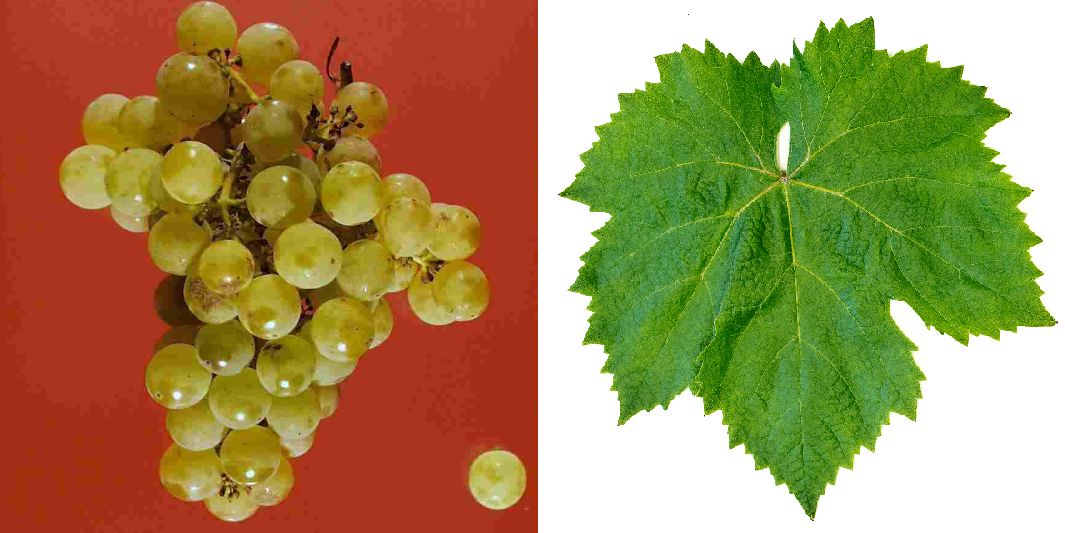The white grape variety originates from Spain. Synonyms are Cartoixà, Cartuxa, Moll, Pansa Blanca, Pansal, Premsal Blanca, Xarell-Lo, Xarel-Lo, Xarel-Lo (a peculiarity is the special "dot" used only in Spain), Xarello Blanco, Xarelo, Xarelo Blanco and Xerello. Despite seemingly suggestive synonyms or morphological similarities, it should not be confused with the Cayetana Blanca, Macabeo or Prensal varieties. Supposedly, the name derives from the Italian "chiarello", meaning clairet (French term for a light red wine type). It was mentioned under the name Xerello as early as 1785 in its probable place of origin, Penedès. According to DNA analyses carried out in 2015, it originated from a presumably natural cross Hebén x Brustiano Faux. However, this is based on only 20 DNA markers (see molecular genetics for more information). There is also the color mutation with reddish berries Xarello Rosado. Whether there is a relationship to the varieties Xarello Cataluna, Xarello Mascalese or Xarello Negro is not known.

The early to medium ripening, high-yielding vine is susceptible to powdery mildew and downy mildew, but is resistant to botrytis. It yields aromatic, acidic, full-bodied white wines with aromas of pears and lemons and sometimes vegetal notes, as well as aging potential. One study found an unusually high level of the health-beneficial antioxidant resveratrol. In Catalonia, the variety is mainly cultivated in the DO area Penedès, where it is used for still wines as well as being one of the three standard varieties for Cava, along with Macabeo and Parellada. In the Alella DO region, it is also very widespread as Pansa Blanca. In 2016, a total of 8,534 hectares of vineyards were designated in Spain. It thus ranks 83rd in the world grape variety rankings (Kym Anderson statistics).
Source: Wine Grapes / J. Robinson, J. Harding, J. Vouillamoz / Penguin Books Ltd. 2012
Images: Ursula Brühl, Doris Schneider, Julius Kühn-Institut (JKI)
Voices of our members

Serious sources on the internet are rare - and Wine lexicon from wein.plus is one such source. When researching for my articles, I regularly consult the wein.plus encyclopaedia. There I get reliable and detailed information.
Thomas Götz
Weinberater, Weinblogger und Journalist; Schwendi